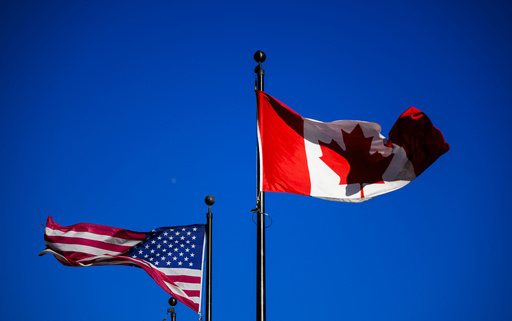
PALM BEACH, Fla. — President Donald Trump has introduced a series of executive orders that have thrown the global economy into uncertainty, while complicating his aim of reducing inflation. Through tariffs aimed at Canada and Mexico—intended to tackle illegal immigration and the fentanyl crisis—both nations have responded with their own taxes on U.S. imports. Additionally, Trump has imposed a 10% tariff on goods coming from China, justified by a campaign against the production of fentanyl.
On a broader scale, Trump’s actions have imposed tax increases that could accumulate to over $1 trillion in a decade, all without the approval of Congress. He acknowledged the potential consequences of his actions might entail “some pain,” predicting higher inflation, job losses, and hindered economic growth.
The executive orders stem from the International Emergency Economic Powers Act, a law that dates back to 1977. This legislation empowers the President to declare economic emergencies and undertake actions such as imposing tariffs in response to perceived threats. Currently, numerous emergencies remain active under this law, which include responses to past geopolitical conflicts and human rights issues in various countries. The act allows for freezing and blocking financial transactions that are seen as unusual or extraordinary threats to the U.S.
The newly enforced tariffs are scheduled to take effect immediately. A 25% tariff will be placed on imports from Canada, though energy products like oil and gas will incur a reduced 10% tax to mitigate higher costs for U.S. consumers. Mexican goods will also see a 25% increase in tariff, while imports from China will face an additional 10% levy. While Trump asserts that these tariffs are paid by foreign entities, in reality, the costs are borne by the domestic importers, effectively translating into higher taxes for consumers and businesses.
These tariffs are primarily being attributed to issues of illegal immigration and drug trafficking. Although some may challenge the rationale behind these tariffs, with reports indicating a decrease in unauthorized crossings and a relatively low number of fentanyl seizures, Trump maintains that these measures are necessary. His executive orders declare a troubling collaboration between Mexican drug traffickers and government entities, which purportedly jeopardizes U.S. national security. Regarding Canada, Trump claimed that the presence of Mexican cartels poses a threat, while the order concerning China labels the country as a sanctuary for organizations that deal in illicit drugs.
The possibility exists for an increase in tariffs. The executive orders explicitly state that the U.S. President has the authority to respond to any retaliatory measures taken by Canada and Mexico, which are reportedly preparing their own tariffs on U.S. goods. However, any increase in tariffs would not occur automatically; it would be subject to the President’s decision.
The term “de minimus” refers to a provision within the orders that impacts low-value imports. Currently, items valued under $800, such as a dress bought from a foreign retailer, can avoid customs duties due to their low value. However, this exemption will no longer apply to goods from Canada, Mexico, and China, meaning even minimal value items may now be subject to tariffs.
Congress does retain a form of oversight regarding the tariffs. Any attempt to halt the tariffs would require new legislation, which Trump would need to sign—a scenario that seems unlikely given his current stance. Nonetheless, the executive order mandates that the Department of Homeland Security provide ongoing reports to Congress regarding the status of the declared national emergency.
As for the potential removal of tariffs, the administration has yet to establish clear criteria for doing so. While one official hinted that a decrease in fentanyl-related fatalities could be a measure, the ultimate decision rests with Trump. The order has directed Homeland Security Secretary Kristi Noem, along with other officials, to assess whether satisfactory measures have been taken to address the identified emergencies. Eventually, it will be Trump’s discretion that determines whether the tariffs remain in place or are lifted.

